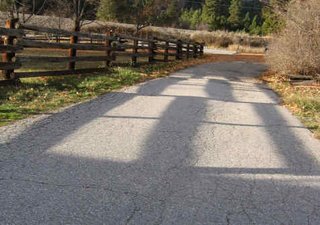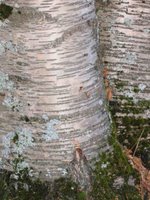...squaring up. In my opinion, no matter how careful you are when constructing a block, by the very nature of the material we're using, it is impossible to make a perfectly square block. Fabric has stretch, to begin with. Inaccuracies can creep in during cutting, seaming, even pressing. Something somewhere is going to be out of whack and need trimming off. Here I've placed my 6" square-up ruler over a block which should be 4" square. If you look closely at the center of the left side and along the bottom, you'll see a bit of fabric beyond the edge of the ruler. This may not seem worth fooling with, but trust me, the more seams in a quilt, the more those little imperfections add up and cause fitting problems on down the road. Better to make the blocks square now than try to deal with the problems it could create later. Not my favorite job, one I view at best as a necessary evil. I'll get to it tomorrow.























































